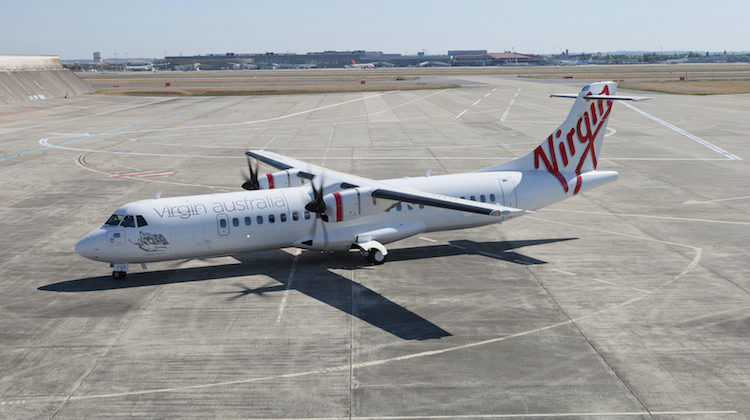
Virgin Australia says the airline group is on track for a full year profit despite a forecast second half loss amid weak demand in its key domestic market that has prompted capacity cuts focused on regional routes.
The company reported a statutory loss after tax of $58.8 million for the three months to March 31, compared with $28.3 million loss in the prior corresponding period. Virgin said the bulk of the deterioration in the statutory result was due to restructuring charges such as the removal of surplus capacity due to the resources downturn.
Underlying profit before tax, which removes one-off costs and was the airline’s preferred measure of financial performance, was $18.6 million, an improvement from the $22.2 million underlying pre-tax loss a year ago.
“While the group improved its underlying performance in this quarter, it was against a challenging operating environment,” Virgin chief executive John Borghetti said in a statement on Monday.
“This environment has been impacted by weak consumer demand and sentiment, uncertainty around the federal election and the resources sector downturn.
“As a consequence, we will reduce group capacity by 5.1 per cent in the fourth quarter, with domestic reductions focused on regional routes.”
Borghetti said the fleet restructuring would offer “significant cost savings going forward”.
Virgin said it expected its 2015/16 full year underlying profit before tax to be in the range of $30 million to $60 million. The compared with an underlying loss before tax of $49 million for the 12 months to June 30 2015.
The full year guidance points to a second half loss of between $20 million and $50 million, given Virgin posted underlying profit before tax of $81.5 million in the 2015/16 first half.
Virgin’s assessment of the state of the domestic market mirror those of its local rival Qantas, which said on March 30 it planned to put the brakes on domestic market growth due to weaker-than-expected demand.
“Some softness in demand, related to the upcoming federal election and recent drop in consumer confidence in Australia, began to emerge over the peak Easter and school holiday period in late March and continued to be seen in forward bookings in April and May,” Qantas said on April 18.
“Traffic over the peak Easter and school holiday period from late March fell below expectations, compounded by a disconnect in the timing of Easter and school holidays in most Australian states.”
The company’s third quarter traffic statistics showed both its Virgin and Tigerair domestic operations grew capacity, measured by available seat kilometres (ASK), and the number of passengers carried.
Virgin domestic flew 4.1 million passengers in the three months to March 31, up 1.6 per cent from the prior corresponding period, while ASK’s also rose by 1.6 per cent. Load factors were 1.1 percentage points higher at 75.4 per cent.
At Tigerair, passenger numbers rose 14.7 per cent increase to a little over 1 million, while ASKs were 14.1 per cent higher. Load factors eased 0.2 percentage points to 85.5 per cent.
Virgin’s international network posted a slight decline in passenger numbers and capacity. At the end of March, Virgin handed over its flights to Bali from Melbourne, Adelaide and Perth to Tigerair. And its international capacity was also expected to be affected in the final three months of 2015/16 as its Boeing 777-300ER fleet has new business class seats installed, resulting in the temporary suspension of its three-times weekly Sydney-Abu Dhabi service between April and July.










